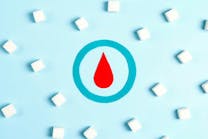NNeTLIMS Israel (Softov) kicked off its laboratory information
systems (LIS) business in 1996, opened its U.S.
headquarters in New Jersey in 2002, and today finds
itself not only serving the second-largest health maintenance
organization (HMO) in the world but also powering Quest
Diagnotics' operations in India. NeTLIMS is an example of a
good idea done well. In July, the company's AutoFusion Blood
Bank Management System received FDA approval for use in
the United States, and the company launched its AutoMobile
to help clients expand support of on-the-road and in-hospital
phlebotomy using standard hardware. One of its pioneer
employees, Rami Jaschek, spent a little time explaining his
experience with the company.
Edited by Carren Bersch, Editor/MLO
MLO: While there is much being made by many
organizations that “global” is a relatively new way of doing business,
NeTLIMS, according to its website, has been engaged since its inception in
global entrepreneurship. When did you join NeTLIMS, and when did its offices
open in your present Jersey City, NJ, location. What were you originally
charged to do for NeTLIMS overseas? What happened that made you realize that
your performance had succeeded, and how long did that take?
Rami Jaschek, VP of Technology at NeTLIMS:
I joined
NeTLIMS Israel (Softov) back in 1996 and actually helped build NeTLIMS in
2002. I was the first COO of the company. At that time, we mostly focused on
the New York area. Due to the company's small size at the beginning, this
meant doing just about everything, from marketing to making sure that bills
were paid and assisting clients with support questions or instructing
technicians. Our first high-profile sales (i.e., New York University Medical
Center) meant that we were being accepted as a player in the U.S. market We
were competing with leading U.S. companies, with what was a successful
solution. It took us about two years to get to that point.
MLO: Over the years that you have worked
overseas, have you been able to discern the general differences in medical
laboratories there compared to those in the United States; and, if so, what
are those differences and have overseas labs advanced in those areas to a
greater degree than their American counterparts? Have overseas labs been
earlier adopters of technology than American labs?
Jaschek: Many differences are due to the structure of
the healthcare market. For example, in an HMO situation —more common
overseas — the lab takes on a larger part of the patient differential
analysis. Reflexing, deciding on additional tests, and putting a greater
focus on result interpretation allow the lab to move further down the road
to a patient diagnosis without need to go back to the costly
physician-patient-phlebotomy path. Another major difference is that
patients, especially chronic patients on constant treatment, are very much
involved in their own care. They know how to medicate themselves based on
the levels shown in their tests. For example, coumadin-treated patients can
adjust their medication based on their PT results with no outside
assistance.
Different technologies are sometimes adopted earlier in
overseas markets. This may be due in part to working with lower prices for
testing, which pushes labs to innovate and more quickly adopt work-saving
technologies, such as automation, stronger electronic-medical-record-to-lab
integration, electronic phlebotomy solutions, and so forth. When validating
an entirely new analyzer, the lab looks to set ranges, validate linearity of
results across the analyzer' dynamic range, and so on. This calls for
specialized reports and greater control over handling and analysis of an
analyzer's regular results and quality-control values.
MLO: Can you outline specific examples of two
or three laboratories with which you have worked in other countries that
have used your LIS software solutions to improve some aspect of their
performance? In what ways do these installations demonstrate advanced use or
earlier, wider adoption of software solutions over what is being done in the
USA? How do you integrate your products with LIS/HIS from different vendors?
Jaschek: I believe that moving into full automation
of the electronic path from the physician system to the lab and back has
seen the biggest changes in those laboratories in which NeTLIMS has worked.
HMO-wide repositories of patient orders and standing orders, coupled with
localized patient service center solutions that can access those
repositories, guide the phlebotomy team in collection, and transfer the
information electronically to the relevant lab. Removing the bottleneck of
data entry at the lab gave laboratory technicians/technologists the option
to utilize pre-bar-coded labels at PSCs and even skip the
receipt-confirmation step. This was done using automation-based
pre-analytical solutions such as sorters and automation lines, together with
the LIS-supporting analyzer and automation-based receipt-confirmation
indications.
Growing volume that flows directly into the analyzers
strongly emphasized the need for electronic tracking of sample position in
the lab — with the LIS in the center collecting data from all automation
lines and analyzers showing the user where all his samples are at any given
moment. The cycle is closed, with automatic approval at the lab and
electronic results delivery to physicians, which promises a very short
turnaround time.
Many of the steps described have come into play earlier
overseas, especially in large-volume labs and in a wider, more complete
fashion than seen in the United States, with size and pricing forcing a more
rapid pace. Integration with multiple vendors is accomplished based on
engines for interfacing, with all points of contact maintained outside the
main source code so solutions can be given with no need for a version change
and with no impact on other users. We have developed and continue to develop
a “pool” of drivers for multiple purposes (i.e., analyzers, HL7 interfaces,
billing, proprietary) that either provides an immediate solution to an
interfacing need or gives us a strong basis from which to start to find a
solution.
MLO: The NeTLIMS' website states that the
company has worked with companies in Israel, including the world's
second-largest HMO Clalit … and that it has installed its software most
recently has supported Quest Diagnostics' Laboratories Operations in India.
Can you name other countries in which you have examples of the varied uses
of the NeTLIMS LIS software systems? Can you reveal the most unlikely user
of your software in other countries? Do global companies inspire NeTLIMS to
upgrade or reinvent its offerings; and, if so, can you give a couple of
examples?
Jaschek: We are currently operating solely in Israel,
the United States, and India. We expect to branch out to additional markets
in the near future, but current implementations exist only in those
countries.
I believe the most unlikely users turn out to be the most
inspiring ones down the road. Genetics labs that started by building on our
AutoLIMS core product, with its many configurable logic options and reports,
ended up being the driving force for our AutoGenetics module. Bone-marrow
banks have been using AutoFusion (our blood-bank module) for their unique
uses and have driven our product's customization much further, bringing us
to the step of looking at a full-blown module just for them.
A recent example of innovation can be found in two of our
hospital clients, both of which deployed a robotics line interfaced with our
system and, together with our outreach module, deployed to hospital wards.
One of the clients came up with the idea of having the system automatically
complete testing for a patient who is being transferred from the emergency
room (ER) to a hospital ward. Based on data from the hospital information
system, our LIS detects differences between the ER's admission test panel
and the ward's admission panel, and orders the automation to perform the
additional tests. This provides physicians at the ward with a full admission
panel very quickly without the need to poke the patient again.
In the same area but with a different goal in mind, we
added, at the request of a second hospital, the ability for physicians to
place new orders based on samples that currently exist in the lab (subject
to stability of the sample per test and automation line indication of sample
state). This allows physicians to order additional diagnostic tests that get
routed to the lab and the automation line directly (as no collection is
needed) and to get results within a very short span of time, sometimes with
no human intervention with our automatic approval.
MLO: What challenges do you and other NeTLIMS
representatives overseas face as part of the company's global outreach? What
does — and what has — NeTLIMS as a company faced in the years it has been
developing its global business? Of all the details that one must confront in
mastering global outreach, what are the “Top 3” suggestions you would give a
newly minted NeTLIMS' employee who was pursuing the global arm of the
business?
Jaschek: The greatest challenge is understanding the
uniqueness of the lab market. You must understand the environments your
clients are working in to be able to suggest relevant or even innovative
solutions. Figuring out what overseas experience is relevant for a client
question and what calls for a local solution is key. Adapting to the
specific culture and learning how to motivate and teach people in different
cultural environments is also a difficult task.
I believe we have faced what any company doing business
outside its borders has faced, especially with the technical and financial
difficulties of setting up a base very far from the parent company. Learning
where you can take advantage of things — for example, learning how to
benefit from time-zone differences — that in other places may be limitations
is key. In general, I would say that accepting the fact you are on an
ever-continuing learning path, balancing between applying your knowledge and
the company's knowledge — and, yet, being able to recognize when a problem
is different and requires a new approach — is the main goal.
I believe the most important goal of any new employee is
to study the product he is supporting, implementing, or developing in
context; learn not only what the product's features are but also which
client need he came to address; and learn why the market at the relevant
territory brought about this need and solution. Being a very open platform,
AutoLIMS may, in many cases, suggest multiple solutions to any given
question. Finding the right solution that will continue to provide a
solution as the usage continues is vital.
Another necessary point to learn is where to go for
knowledge. With a large suite of products and many niche solutions, knowing
where to ask for assistance or where to search for knowledge is critical in
order for a new employee to avoid the “reinvent-the-wheel” syndrome.
Learn more at www.netlims.com or contact Rami
Jaschek at [email protected] .






